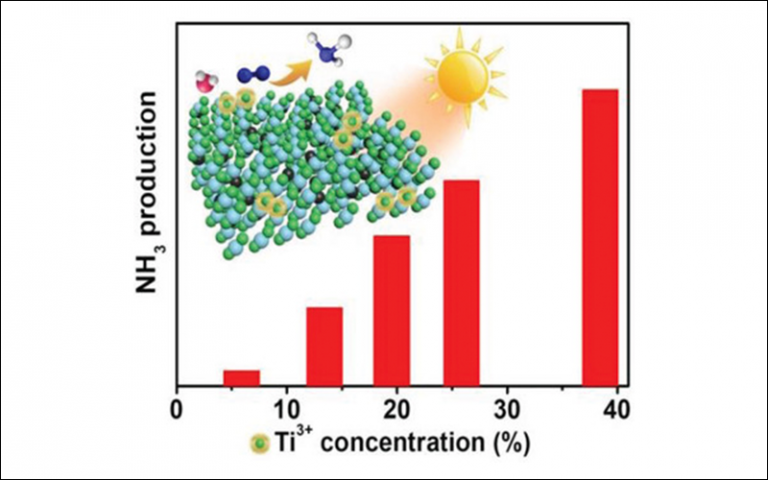A Paper Just Published in Advanced Materials by Prof. Tang's Group
18 January 2021

A new paper on photocatalytic ammonia synthesis just published in Advanced Materials by Q. Han et al. from Prof. Junwang Tang's group.
Ammonia (NH3) is an important chemical raw material that plays a significant role in the synthesis of fertilisers, explosives, fibres, and plastics. It has been identified as a suitable hydrogen carrier because of its high energy density and liquefiable feature. Traditionally, NH3 is synthesised using the Haber–Bosch process, which requires high temperature and pressure to dissociate the extremely strong bonds of N2. Moreover, the generation of H2 required for this process causes the emission of large amounts of CO2. On the other hand, the photocatalytic reduction of N2 can be performed at ambient temperature and atmospheric pressure using water as the proton source; it is considered to be a promising NH3 production method. Hence, the development of highly active and stable photocatalysts has attracted much attention of researchers over the past decade.
Photocatalytic ammonia synthesis is exciting but quite challenging with a very moderate yield at present. One of the greatest challenges is to develop highly active centers in a photocatalyst for N2 fixation under ambient conditions. Herein, porous carbon-doped anatase TiOx (C-TiOx) nanosheets with high-concentration active sites of Ti3+ are presented, which are produced by layered Ti3SiC2 through a reproducible bottom-up approach. The research in Prof. Tang's group has shown that the high-concentration Ti3+ sites are major species for the significant increase in N2 photoreduction activity by the C-TiOx. Such bottom-up substitutional doping of C into TiO2 is responsible for both visible absorption and generation of Ti3+ concentration. Together with the porous nanosheets morphology and the loading of a Ru/RuO2 nanosized cocatalyst for enhanced charge separation and transfer, the optimal C-TiOx with a Ti3+/Ti4+ ratio of 72.1% shows a high NH production rate of 109.3μmolg−1h−1 under visible-light irradiation and 3 a remarkable apparent quantum efficiency of 1.1% at 400 nm, which is the highest compared to all TiO2-based photocatalysts at present.
 Close
Close

